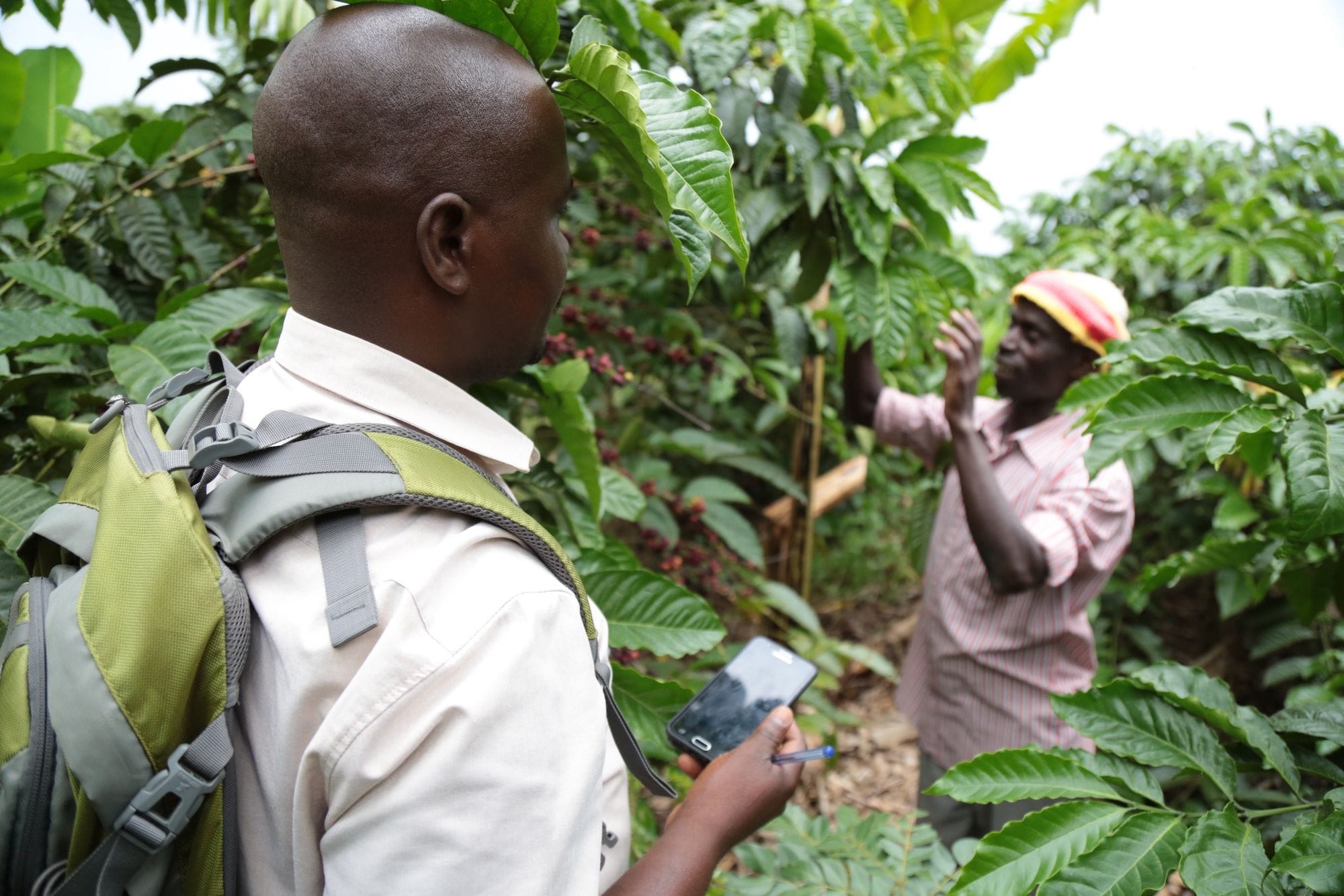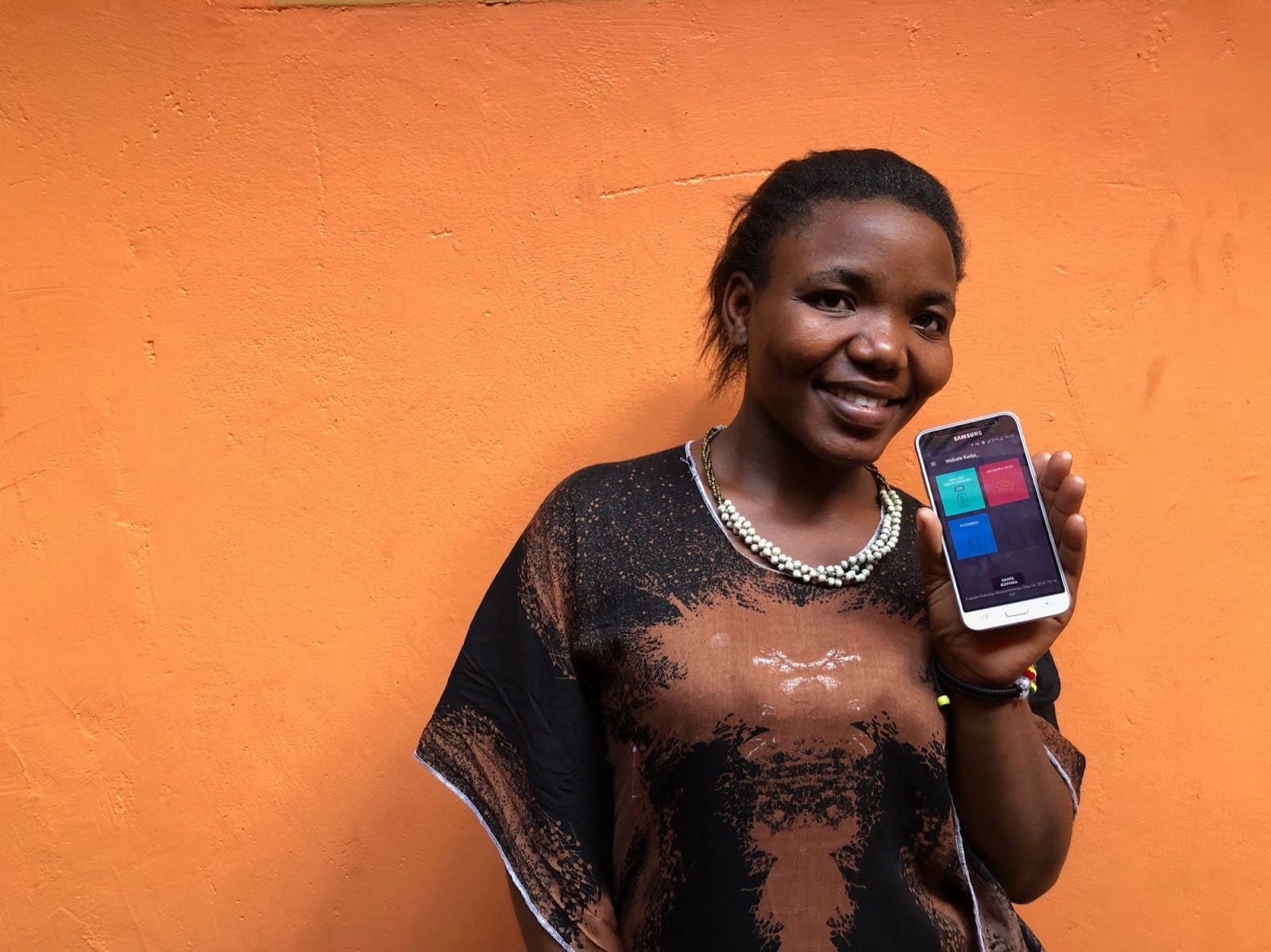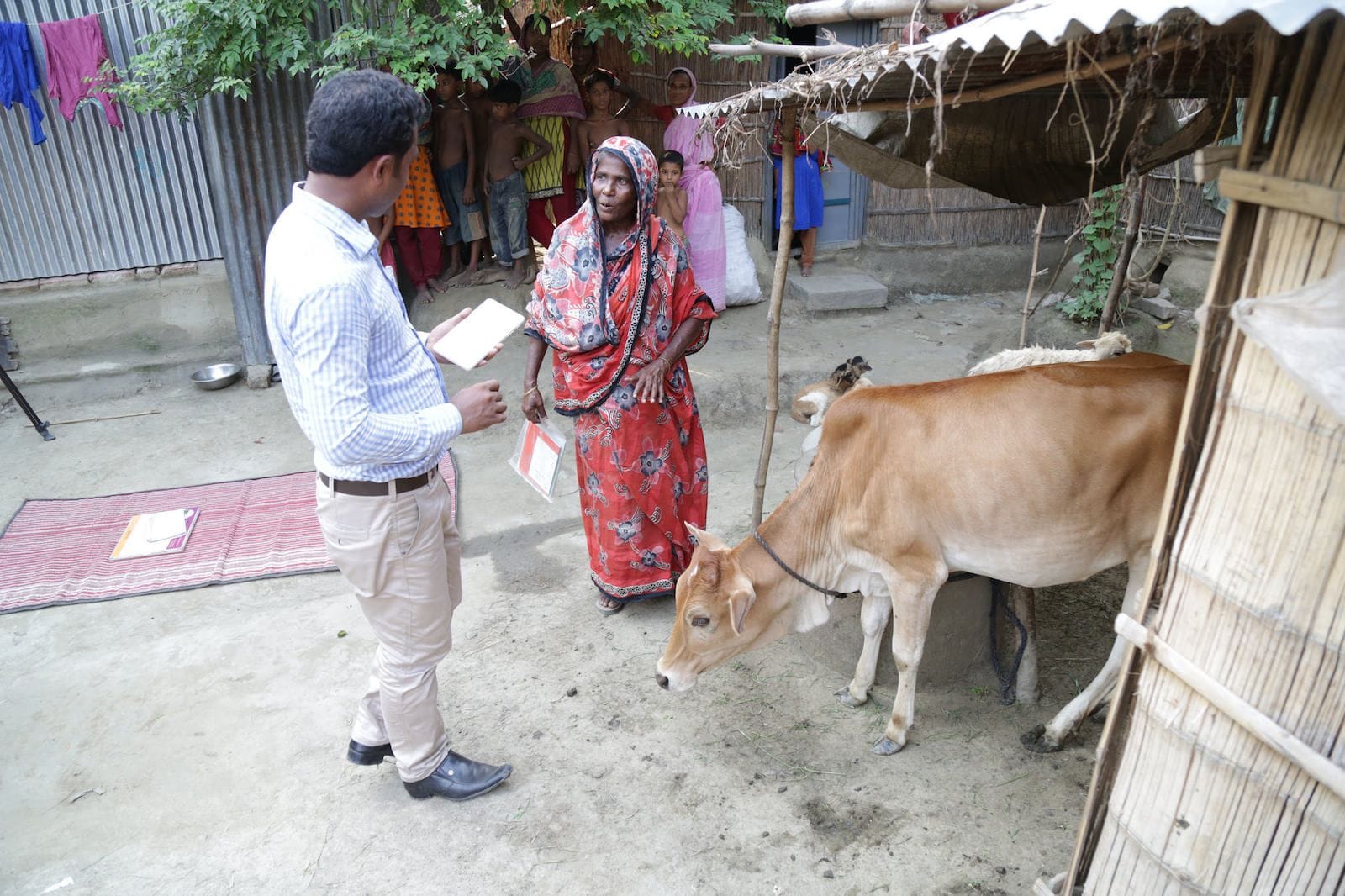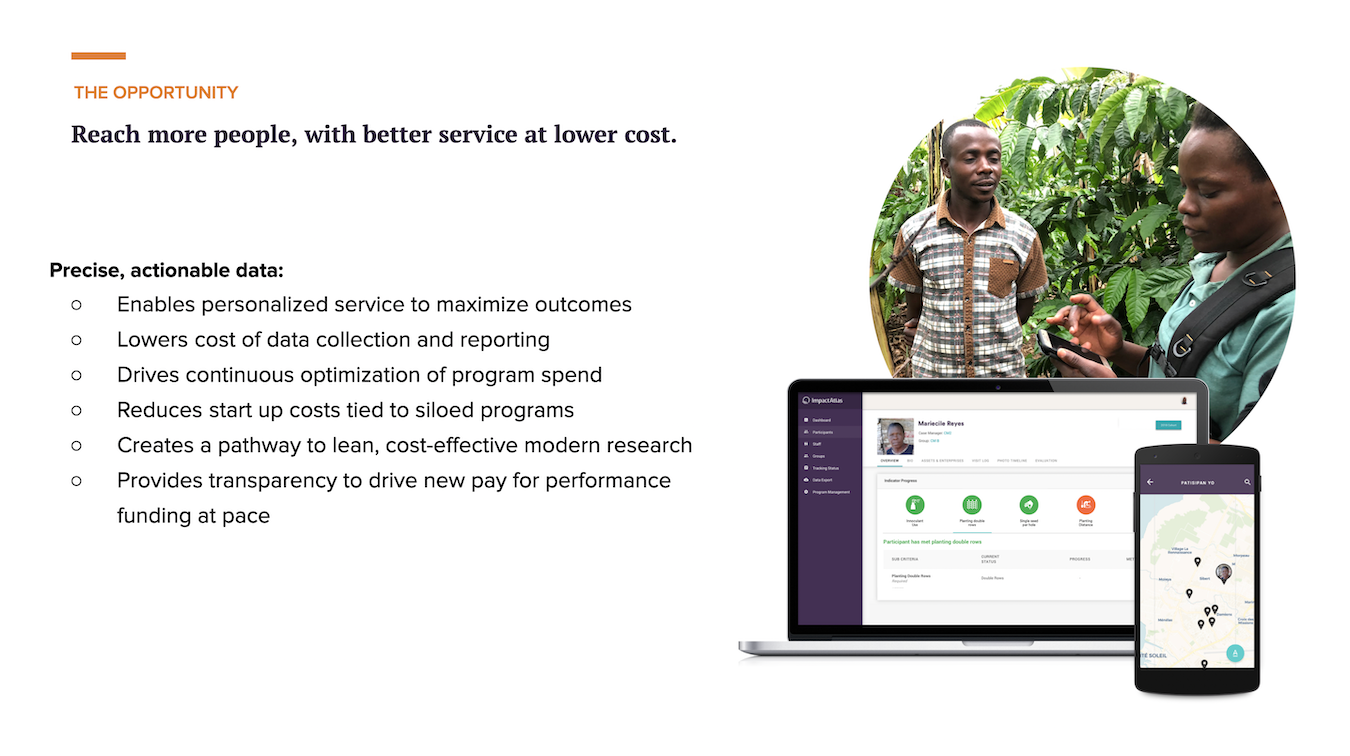How Impact Atlas is Working to Enable Transparency & Accountability
Chantal Buard, the CEO and Cofounder of Impact Atlas joins us to explore how she came up with the idea for Impact Atlas, what Impact Atlas does, and how you can support their mission to drive increased transparency and accountability

For this month’s Stronger Together, we’re joined by Chantal Buard, the CEO and co-founder of Impact Atlas. Chantal officially incorporated Impact Atlas in October of 2017, but was building the idea for a few years prior. Chantal recently received the Project of the Year Award from Berkeley World Business Analytics.
Today, Chantal joins us to explore how she came up with the idea for Impact Atlas, what Impact Atlas does, and how you can support their mission to drive increased transparency and accountability. If you’d prefer to listen to our conversation with Chantal, you can check out our Stronger Together podcast episode.
What’s your background?
I’m originally from France and came to the United States twenty five years ago, right in the middle of the digital revolution. I have a business and creative & digital arts background and have spent time supporting many businesses throughout my career.
Early on, I had a digital agency that in 2010 I merged with a social impact agency. We worked together on large scale system change initiatives with funders and implementers in many different subject areas, such as poverty alleviation, climate change, prison reform, trauma release, education, fisheries, and more.
Out of that collaboration, I ended up building three different technology platforms aimed at solving the problems I noticed while in the field, including Impact Atlas.
What is Impact Atlas?
Impact Atlas is a technology platform aimed at supporting the delivery of social programs as well as measuring their impact in real-time. Today, we are deployed in nineteen countries and working in seven languages. We work in many different areas such as workforce reentry programs, poverty alleviation, smallholder former agronomy training, child services, and refugee camps.
Our mission is to transform how social programs are managed and financed, to allow organizations to create lasting change at scale. Our technology has two components. First and foremost, we provide an app for our users in the field (it could be a social worker, trainer, coach, coordinator, farmer, health worker, volunteer, distributor, sector specialist, staff, supervisors you name it... anyone that is responsible for the delivery of the service or good). We equip them with an app that they can use on their phone or tablets, even offline. Meaning that they can go to the most remote parts of the world and still have all the latest information about a participant, or specific program and also capture relevant data. The app is configured to their contextual programs to be highly relevant and in the language of their choice.
We also provide web-based dashboards for supervisors, program directors, and headquarters staff (like monitoring and evaluation specialists) to monitor and learn what’s going on in the field as the data is being populated either in real-time or as soon as the field workers have a connection. They are able to see all the programs being implemented in their dashboards, even the ones happening in different countries.
What inspired the creation of Impact Atlas?
Impact Atlas was actually created for our own needs in the first place. In my previous company, we were working on a collaborative initiative in ultra-poverty and we came across an amazing program called "Graduation" created by BRAC, the largest NGO in the world based in Bangladesh. They had perfected a holistic approach to break all the poverty traps a person could encounter and "graduate" the poorest people out of ultra-poverty sustainably within 2 years.
Top researchers paid attention to it and wanted to test this approach in other countries with other organizations to see if it could be replicable. Esther Duflo and her team came out with early research in 2015 that showed very promising results. We decided to anchor our initiative on scaling this approach globally. Convening the top implementers, making the approach known by all protection governments agencies and poverty alleviation organizations, and democratizing BRAC's knowledge.
Ultimately, Impact Atlas was born out of a need to gather data at scale to understand all the nuances in real-time that could be taken into account to maximize the adoption and scale of such a program. We incubated Impact Atlas inside our initiative and in October 2017 we decided the tool could benefit many other types of organizations and programs, so we created a spin-off.

Who does Impact Atlas support and how do you support them?
Today, we work primarily with NGOs, small and large foundations, government organizations, and research teams. We provide organizations the opportunity to reach more people and enable them to provide personalized services to improve outcomes.
We try to drive continuous optimization of program spend so they know where to adapt. We’re working more and more on creating pathways to create more effective research. Compared to random controlled trials, which are lengthy and expensive, we allow for the collection of ongoing, nuanced data, which allows organizations to better understand their outcomes. Our big goal is to provide transparency and drive new ways to improve funding.
My goal with bunny.money is to show that organizations that are on Impact Atlas have a level of transparency and accountability like never before.
How does Impact Atlas track program outcomes and efficiency?
Impact Atlas has created a unique data platform for health and human services programs. Rather than being work-flow-centric or survey-centric, the platform supports what we call "profile-centric” tech-enabled service delivery. We embed our system inside an organization’s daily operations and impact assumptions and help them deliver services based on their workflow and against those assumptions.
So, for example, you could track the progress of a specific farmer over time (is he attending the trainings he is supposed to, is he implementing those learnings, is he getting new income out if it?). We can also track the cooperative he belongs to and assess the impact at scale through aggregated data.

Why are outcome transparency and program efficiency valuable?
In today’s world, most organizations have no idea what is going on in the field. They are working blind. Most of the time this is not their fault. They are trying to do their best with the limited resources they have. They are just responding to what the system is asking them to do and trying their best. Funders ask them to report on their data and impact without giving them capacity-building resources to go through their digital transformation.
If we are serious about solving global issues at scale, it starts with having a sense of what is truly going on in the field and understanding the nuances and challenges it takes to do that.
When organizations implement Impact Atlas, it allows the program teams to sense early outcome indicators at the individual and group levels (positive and negative, intended and unintended) and modify the program delivery model or study design based on near real-time feedback loops. It allows for macro- and micro-influencers to be detected across comparative cohorts and create new study cohorts based on different outcome trajectories that emerge.
Funders get a sense of money well invested and restores trust. Meanwhile, researchers get a larger and more nuanced data set to play with.
What's one notable client case study you could share?
Our clients are truly the heroes here! There is one that’s really cutting-edge with their data and how they’re using it. They’re a quite large microfinance non-profit running a program called Agri-finance. They’re helping tobacco farmers change crops before the tobacco industry collapses. They provide agronomy training and access to financial services.
They have onboarded tens of thousands of farmers into Impact Atlas. They register the farmers into agronomy training, then know real-time what training they’re attending. They can go to their land and are able to measure the exact land size and know what crops they’re growing. They are also able to understand if they’re implementing what they’re learning in the training and can use that data for credit scores and to secure loans.
At the business level, they’re working with the farmers to create more yield and have a faster transformation in their land. On a macro level, they can understand what crops are working. They’re currently working with a satellite image company to gather data from the field, data from the sky, and quickly move the country to faster transformation. The model is already replicated in six other countries using Impact Atlas.
What does the future of Impact Atlas look like? Which features would you like to see added?
I have a very long wishlist… That’s definitely not only internal, but also from our clients — they’re often asking for new features. Some of that is getting closer and more interaction with the participants. Right now, we’re working mostly with case managers, trainers, and educators. We want more and more interaction with the actual participants through feedback groups. We have a few, but being more in sync with the participants is on my wishlist.
One goal we have is to become more and more of an agile research and development platform. Want to work more and more with for-profit partners to track impact in the field. More organizations and corporations who want to have an impact. We can also help with that to measure.
I’m also hoping to make the platform more and more highly configurable by the clients themselves — more and more self-serve so that it can be more affordable, faster, and easier to implement programs around the world.
I want to attract more funding to make this approach and mindset more democratized. Not just about the tech itself but also about the digital literacy of the partners themselves. Also on my wishlist is to have AI be a catalyst for funding and new program models. We want programs on our platform to be rewarded for the level of transparency and accountability that they’re showing. That’s why the partnership with bunny.money for me is one of many on my wishlist.

Learn More About Impact Atlas
You can learn more about our mission and our tech at impactatlas.com. Another great way to learn more is through a demo. Everything we’ve mentioned today comes to life, it becomes obvious the power of the platform.
Help Nonprofit Organizations to Enable Increased Transparency
You can use bunny.money to donate to your favorite nonprofits with 0% fees. None for you and none for the nonprofit — they’ll receive 100% of your donation to support their members and enable new initiatives like using Impact Atlas to track outcomes. For a limited time, register for bunny.money and you’ll be entered to win money to donate to a charity of your choice.

